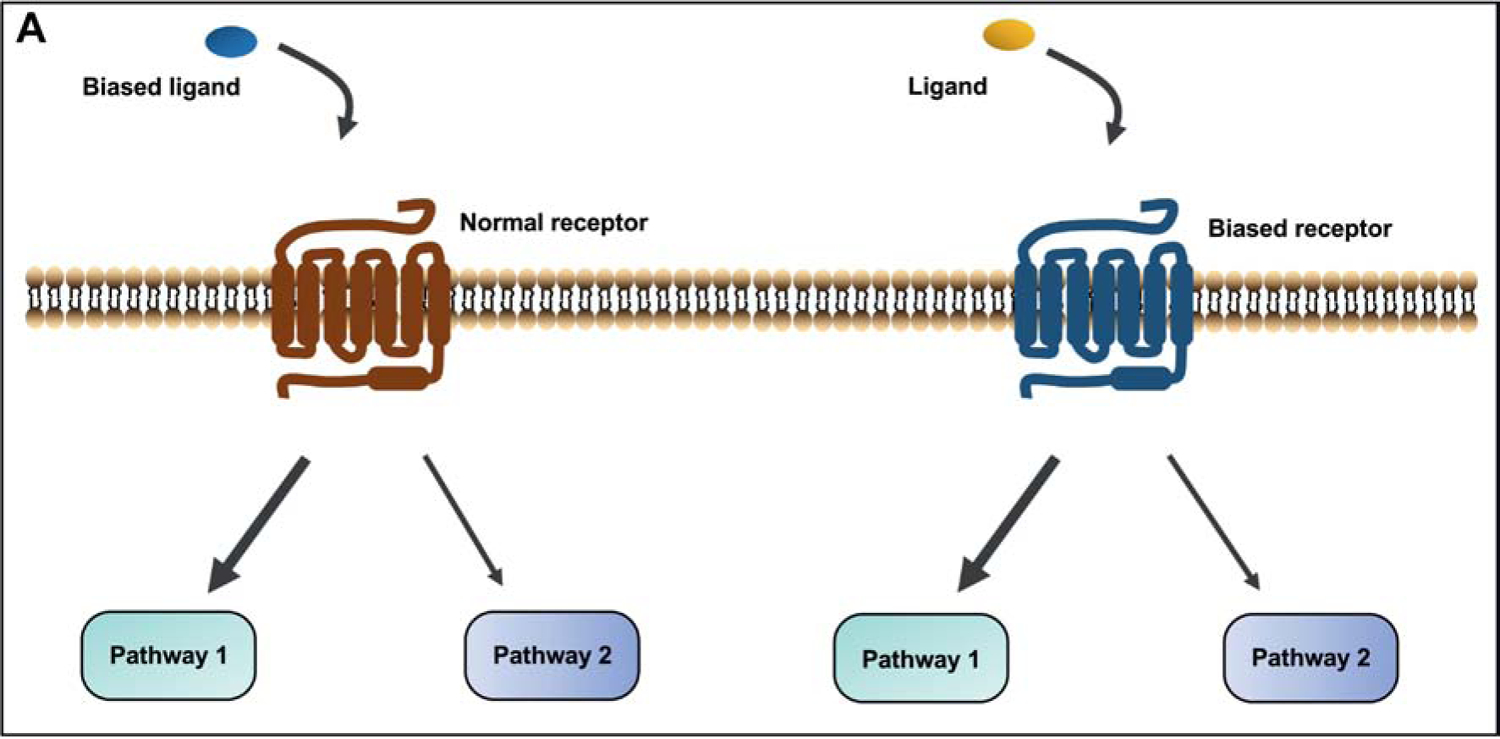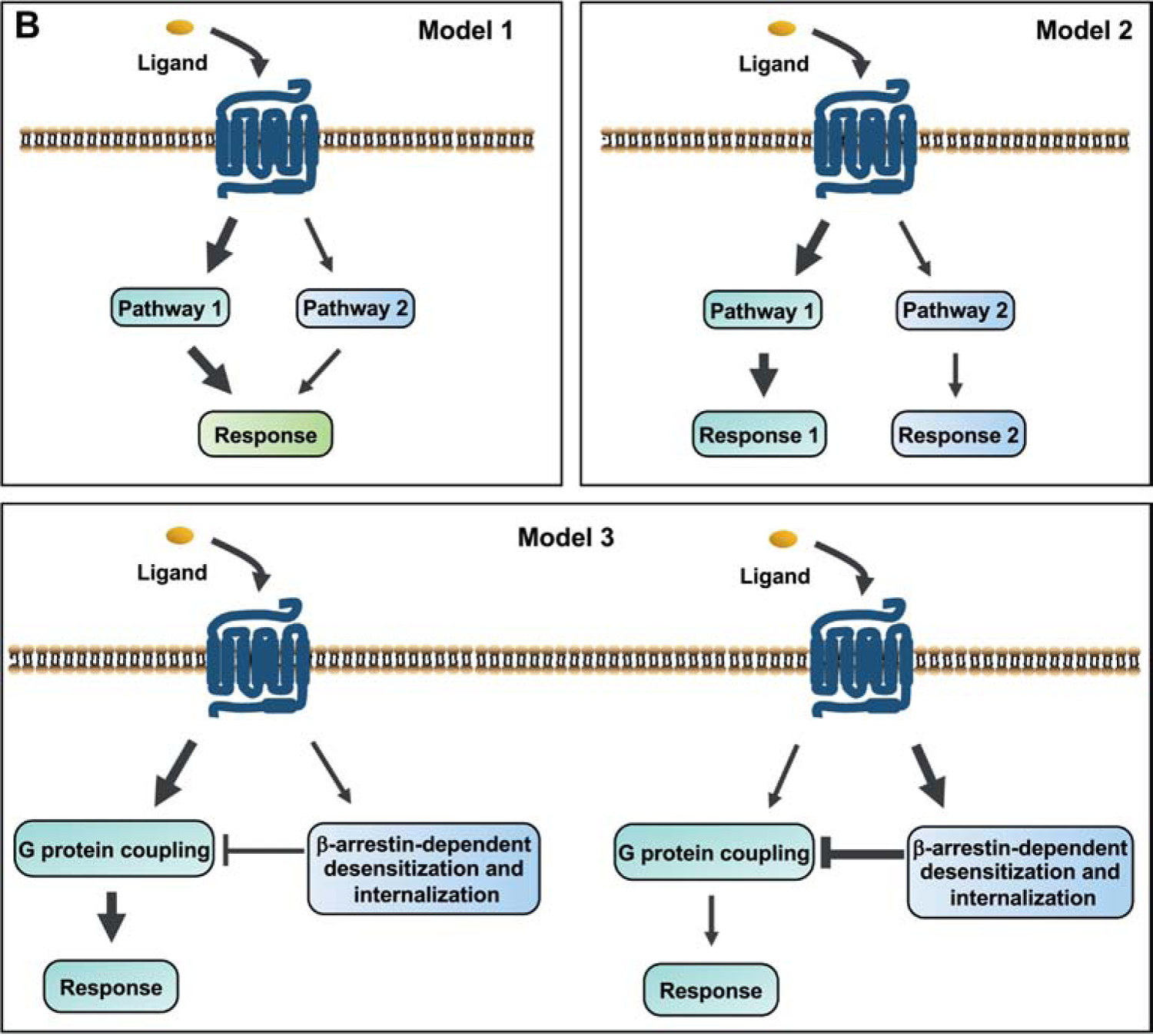Figure 2.


Models for biased signaling and pathophysiological relevance of biased mutants in GPCRs. (A) Two cases of biased agonism: the biased response is initiated by binding of biased ligand to the GPCR or a ligand to biased receptor. (B) Four types of biased mutant models that are proposed to be pathophysiologically relevant. Biased signaling can be initiated by mutant receptor between G protein and β-arrestins, or different G protein subtypes (models 1 and 2). The β-arrestin mediated receptor desensitization and internalization are considered as a counteractive pathway for G protein-dependent signaling (model 3). Mutant receptors can also trigger biased constitutive signaling in the absence of ligand. Sustained endosomal G protein signaling also represents an important pathway mediating physiological function of receptor (model 4).
